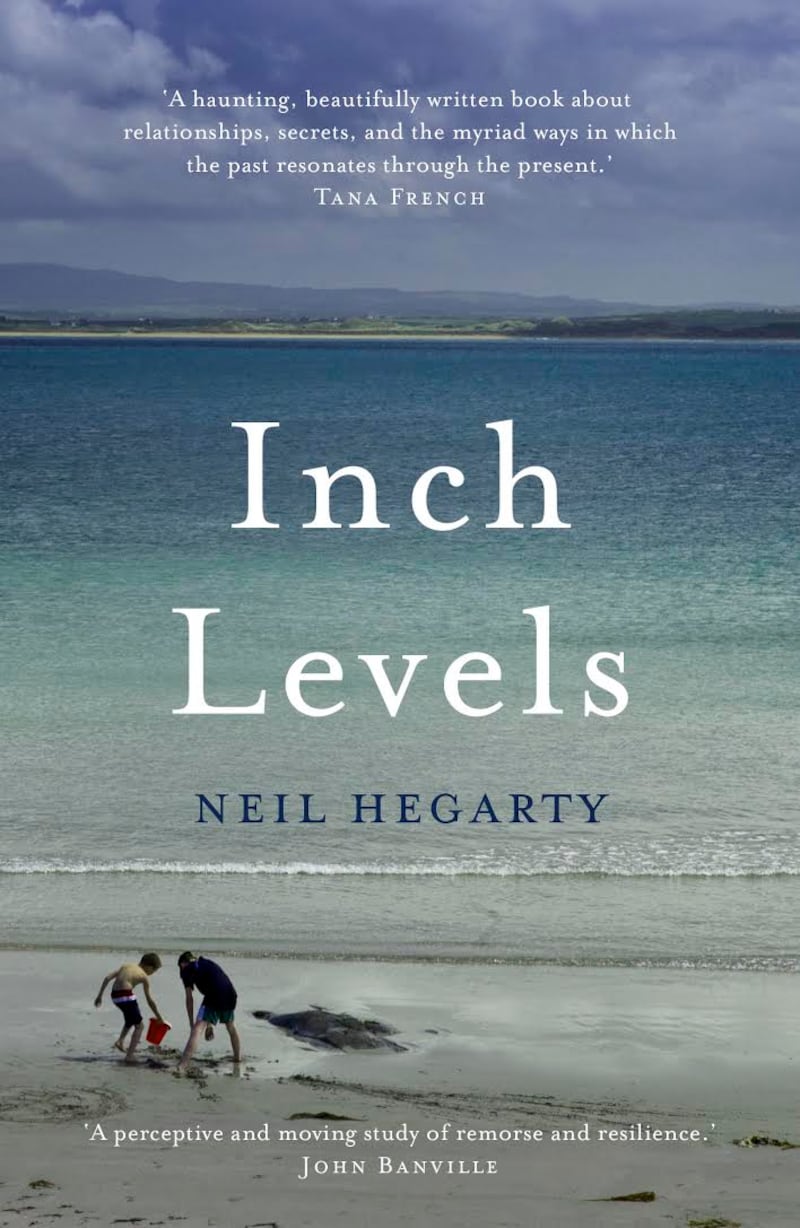“...and now the town came into view for the first time, with its white buildings and slate roofs climbing up from the sea, its little pier flanked by a rocky foreshore, its green waterside park, its handful of large, handsome Victorian houses hidden in the trees beyond.”
There's a particular joy in reading a book and coming upon a place that, while it might not be named by the author, has been evoked so adeptly that it's instantly recognisable. While all readers of Inch Levels will reap the benefit of Neil Hegarty's stunning portrayal of the setting, I have the added benefit – a bonus prize, if you like – of knowing this little coastal town on Lough Foyle, with its "Green on the water's edge, with its bandstand and its stone seats and its white shingle beaches and its little spring that gushed from a rock carved into the shape of a horse's head." I married a man from that town, and while we've made our home at the other end of the country entirely, I have many times walked that beautiful rocky shore, and my children have often played on that green with their Donegal cousins.
There's a particular joy in a book that evokes a place so adeptly it's instantly recognisable
To read Inch Levels is to be immersed in this northern coastal landscape – lush, scenic and strange – that I'm fortunate to have come to know. From the sterile confines of his hospital room, Patrick recalls a trip to Kinnagoe beach with his family as a child, and how "the long slopes of the hill were not bare rock but instead were dense with heavy vegetation: a dark bush landscape, suggestive of warmer climes". It's a perfect description of Kinnagoe which, for me at least, has always held the faintest insinuation of jungle. The rich, unchecked, foliage of the cliff sides is exquisitely captured, as is the light, the sea, the sky, and the way the edges of these things blur into one another:
“The light was not cool as was customary in such high latitudes, but luminous on this day, radiant, pressing: light welled from the sky and broke from the sea; and started in fine, silver, infinitesimal lines and needles from each individual blade of grass waving and moving in these green fields.”
Beyond the immense beauty of this description lies the power contained in its understated suggestion of threat. The light here is not simply illuminating – it is pressing and welling and breaking; one can’t help thinking that soon it may overwhelm, and those silver needles of grass, infinitesimal, put me in mind of an approaching army, its swords waved aloft. This is assured and vivid writing, an example of the meticulous attention to language that’s evident throughout the novel. One of the many triumphs of the book is the skill with which Hegarty captures the hint of, dare I say it, savagery that exists alongside the loveliness. Inishowen is not a sentimental place. Hegarty is true to the duality of his chosen setting and its many contradictions as he explores the precarious state of a family whose relationships are predicated on the keeping of secrets. Those coastal fields around Kinnagoe may indeed be beautiful, but “up on the unfenced cliff edge, the ground fell quite steeply down to the sea”.

Hegarty chooses not to name the little town with its green and its bandstand. It’s a good decision in a novel that deals so powerfully in things not spoken of: not naming it allows the writer greater freedom; and so I will not name it either. In any event, a town in a novel is a fictional creation, regardless of whether it corresponds to a particular set of geographical co-ordinates – its life within the book is separate and apart from any other existence it might enjoy. It’s over 20 years since I first visited that Inishowen town. We drove up from Dublin, and I remember my now husband dissuading me from stopping to buy a bottle of water on the red, white and blue kerbed streets of a different Northern town in my C reg Corolla. (I would subsequently attempt to drive through that other town one Twelfth of July in the same car). I also remember being bought vodka by one of my now in-laws in the Bailey nightclub and falling over a stool.
I'd never been to Northern Ireland before and, in Derry, I found it unsettling to see soldiers on the streets. For everyone else, going about their shopping, this, of course, was business as usual. The Troubles are woven through the fabric of Inch Levels, as is the emotional detritus of earlier wars. Bloody Sunday is compellingly depicted in all its fear and confusion as the atmosphere shifts from chatter and laughter to tension and later terror – the clatter of the helicopter, the gunshots, the bodies in the street. Hegarty expertly layers the conflicts of successive generations – political and social, as well as familial. The Troubles – the political conflict of Patrick and Margaret and Robert's generation – are layered upon the legacy of World War Two which impacted the lives of other characters in the novel, notably Sarah and Cassie and Anthony. And earlier again, back in the late sixteenth century, there was the ship from the ill-fated Spanish Armada which went aground in Kinnagoe Bay.
When I first heard it, the story of this calamity had the same allure for me as it had for Patrick as a boy: "the shipwreck, the bones, the skeletons of Spanish sailors, the chests of golden treasure". The locals ate the sailors that were washed ashore; this at least was the version my now husband, himself a local, told me when he first brought me to that place. It's a grotesque image, and one that has resonances with the wartime of Sarah's girlhood, when she would hear torpedoes exploding out at sea, and know that in days to come bodies of soldiers would wash up on local beaches. The image of the Armada wreck surfaces at various points in the book, a ghost ship signalling things that refuse to stay sunk. There's an exquisite tension in the novel between the efforts of characters to keep certain things hidden, and the manner in which those same things insist on making their presence felt. As with the Inch Levels of the title, a stretch of reclaimed land along the shores of Lough Swilly, there's a strong sea wall – but on the other side of that wall, the waves persist in rolling in.
Danielle McLaughlin's debut collection of short stories Dinosaurs on Other Planets was published in Ireland in 2015 by The Stinging Fly Press, and in the UK (John Murray), US (Random House) and Slovakia (Inaque) in 2016












